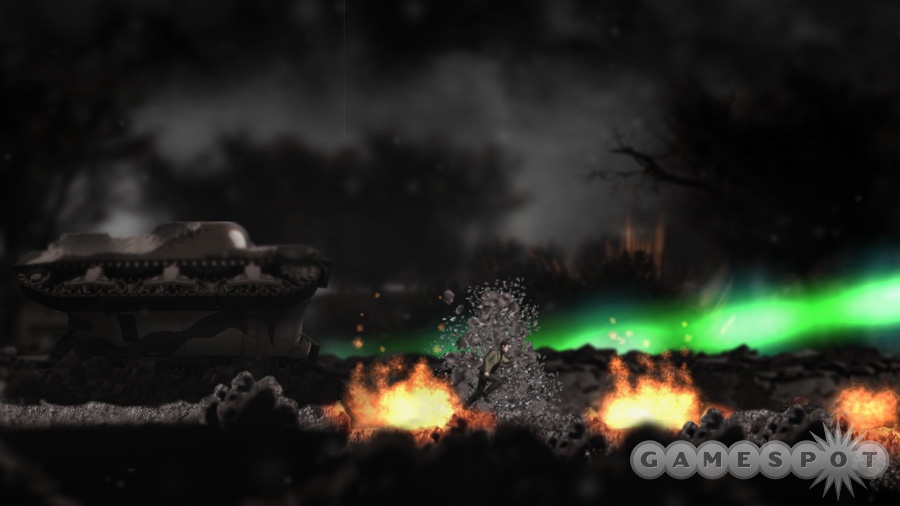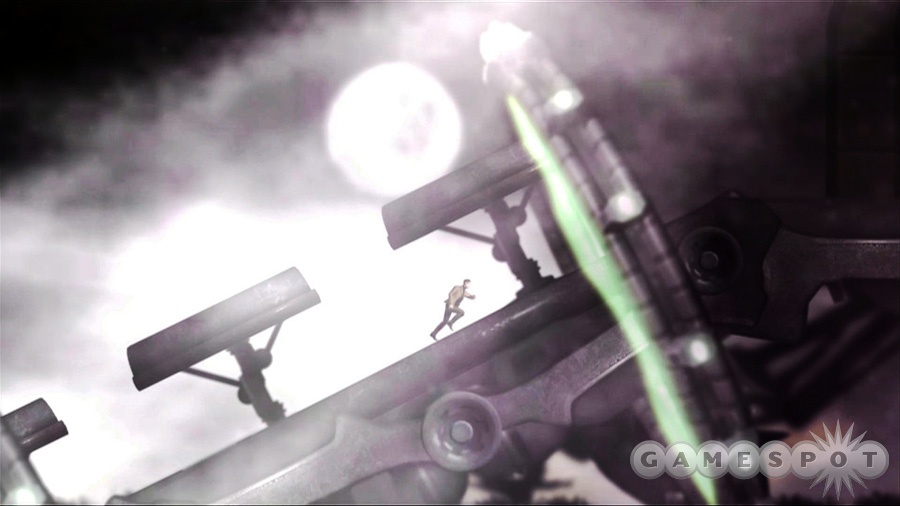The War of the Worlds famously scared a large audience when Orson Welles adapted it into a radio drama in 1938. Today, H.G. Wells' classic tale frightens susceptible players for a completely different reason, with a game that is incredibly hard and disappointingly stale. It combines an interesting premise, appealing visuals, and 2D gameplay influenced by some of the greatest classic and modern platformers, yet it misses much of what made those other games special.

The War of the Worlds makes a good first impression. Patrick Stewart provides a great narration of the story, which takes place in London during the Martian invasion of Earth, staying true to the setting of Wells' novel. Your character, Arthur Clark, is desperate not only to survive but also to find his beloved fiancee and brother. The 2D visuals look nice, with tons of graphical layers in the background and foreground to give environments life. The character animations are all rotoscoped, which is evocative of classic platformers like Prince of Persia and Flashback. Your first few minutes running and jumping feel fine, albeit a little clunky. The controls are simple, with a button that controls both running and interacting with objects (a fact that can become problematic later), a button to jump, and a button to use an axe once you find one. There's not a lot to keep track of other than staying alive as you make your way through the crumbling environment as humanity is destroyed.
But the controls don't easily allow for the speed and precision that the game quickly starts to demand. For the context of the story, the necessity of speed is great. Death is almost always looming in The War of the Worlds, giving a great sense of urgency and a feeling of hopelessness. Martian tripods, drones, and black smoke are hunting for you. You can't fight; you can only run, which fits the source material. But the way the game controls and the things it wants you to do don't mesh well, and the result is frustrating. It's not that your obstacles become challenging in such a way that you can only blame yourself when you fail; rather, you will start cursing the game's mechanics for asking you to line up pixels just right to allow you to grab onto a ledge. If you're smart enough to recognize that an inconspicuous switch on a wall is usable, you still need to stop in the right spot to use it, which can mean death when poisonous black smoke is a split second behind you and you can't get lined up correctly. You spend more time fighting to make your character do what you want him to do than making grand escapes.
There are moments when the game comes painfully close to being great; this is the case when a promising puzzle mechanic is introduced or when everything moves smoothly in a fun and cinematic way. But something always gets in the way to ruin any momentum the game builds. This happens in a literal way during a level in which you're running across crumbling rooftops away from a Martian tripod. While running, you eventually come to what appears to be the end of the line; there are no more roofs to jump toward and taking a leap of faith would result in your death. The solution to this "puzzle" is to wait for a few seconds until a building below is levitated toward you, making it safe to jump on and keep running to the right. Up until that point in the sequence, however, the game has taught you not to stop and not to look back, lest you become another victim of its new alien overlords. Thus, stopping there feels counterintuitive.

This formula of promise and then disappointment follows throughout the game. Some areas are dark and properly moody, but they end up being so dark that you can't see essential elements like ladders or enemies, and you may find yourself dead without knowing why. Sometimes cool things take place in the background of a level, but they distract you from objects that you didn't realize were a threat to you. Some enemies might have been fun to avoid, but terrible hit box detection and other issues make them infuriating instead. If you die in the wrong spot, you repeatedly hear snippets of Stewart's narration, and his voice may begin to grate on you. Then there are the moments when the game thinks you've died, like when you've fallen just far enough for the game to think there's no way you could have survived despite the fact that you've gotten up and can control your character as the screen fades to black and reloads your last checkpoint.
The War of the Worlds is disappointing because it had so much potential. Many elements of the presentation are begging to be in a better game, but it feels like a product that was ushered out the door before it could be properly balanced and tweaked. If you're the kind of person who fondly remembers the demanding, brutally difficult moments in old games like Karateka, the first few hours of The War of the Worlds might stimulate some nostalgic reminiscing. But you're better off replaying those classics and letting the aliens win this particular war.